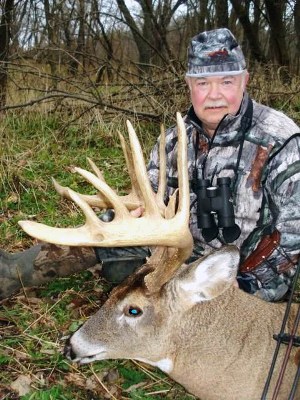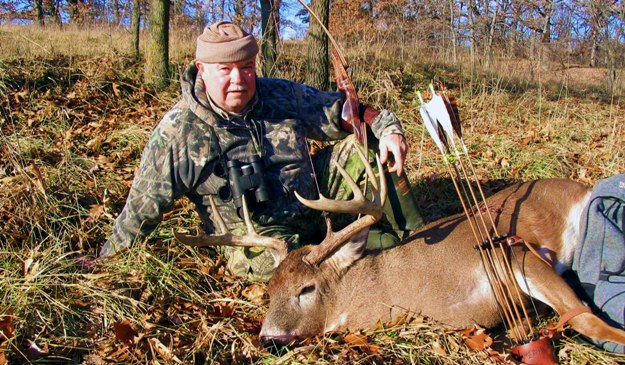 I don’t depend on the solunar tables, because many times the solunar tables will tell you that the deer are most active at a time you can’t go hunting. If I'm going hunting anyway, I don’t want to know that my chances are lousy for taking a deer on the day I plan to hunt, because I won’t hunt as intensively if I believe the solunar tables. Many factors determine when and where deer move - only one of which is the information found in a solunar table. I want to go into the woods anticipating that the buck I'm trying to take will come within bow range on the day I'm hunting. By thinking like that, I'm much more likely to see, hear or be aware of a big buck in my region. In other words, I can hunt more alertly every day I hunt if I'm expecting to take an older-age-class buck.
I don’t depend on the solunar tables, because many times the solunar tables will tell you that the deer are most active at a time you can’t go hunting. If I'm going hunting anyway, I don’t want to know that my chances are lousy for taking a deer on the day I plan to hunt, because I won’t hunt as intensively if I believe the solunar tables. Many factors determine when and where deer move - only one of which is the information found in a solunar table. I want to go into the woods anticipating that the buck I'm trying to take will come within bow range on the day I'm hunting. By thinking like that, I'm much more likely to see, hear or be aware of a big buck in my region. In other words, I can hunt more alertly every day I hunt if I'm expecting to take an older-age-class buck.
Most hunters think the best days to hunt an older-age-class buck are during the peak of the rut. In Iowa where I live, the rut is very predictable. For instance in my section of Iowa around October 25, bucks start making scrapes, however, most of those scrapes and rubs are being made after dark. From the first or second day of November until about November 10th, Iowa bucks will be cruising, looking for that first estrous deer, or they’re searching for another mature buck that has moved into the area to possibly breed. If the bucks find another mature buck in their area, and the bucks aren’t tending the does yet, they'll want to fight. So for me, the best time to take a trophy buck is during the pre-rut. I believe this time is when bucks move the most, and your chances are greatest for seeing an older-age-class buck. During the rut or especially during the peak of the rut, when a buck finds an estrous doe, she may take him into thick cover and stay in that thick cover for 2-3 days. So oftentimes, the peak of the rut can be the worst time to hunt a mature buck.
Here in Iowa, we have what’s known as the October lull. Even though bow season for deer may be in, farmers are cutting their crops and running their tractors, and hunters are moving in the woods. Deer know that danger is present. Although I’ll hunt all season long, that October lull is probably when I see the least number of older-age-class bucks. So, I really start looking for mature bucks from Halloween through the first 2 weeks of November, which is usually the pre-rut in my region.
Another factor that I key in on is that before the pre-rut starts, we usually get a lot of wind that blows green leaves off the trees. When a lot of green leaves are on the ground, the deer still have plenty of selective green leaves they can feed on - even after crops are harvested. The deer will be scattered. Certain kinds of green leaves that blow off the trees are like candy to the deer, and I've noticed that I'm less likely to see an older-age-class buck when numbers of green leaves are on the forest floor. In my area when that October lull is over, this time tends to be when bucks are looking for a fight or searching for their first estrous does to breed.
If I’ve found a big buck that I want to take, I'll spend the most time trying to take him. I may hunt from daylight until dark, because I feel that’s when my chances are best, especially in the middle of the day from 10 a.m. until 2 p.m., when most hunters have returned to their trucks or camp houses to eat lunch.



























